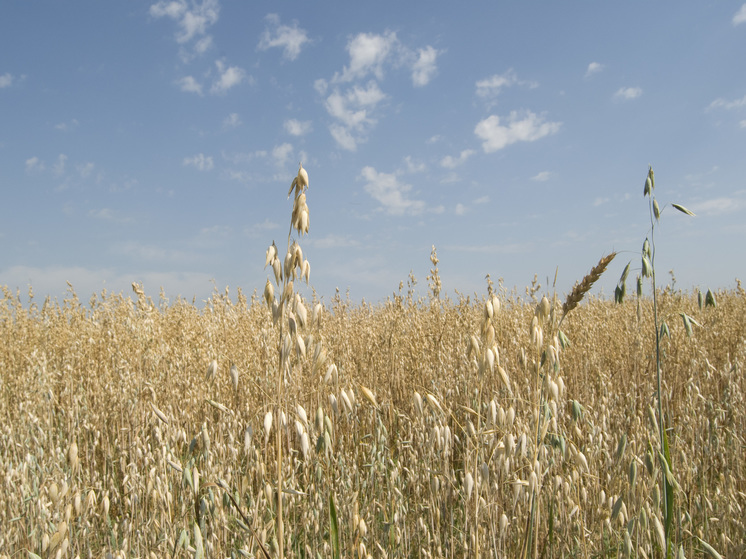Russia set a record for grain exports, but there are problems
[ad_1]

Domestic grain growers have their own calendar: their agricultural year starts from July 1, 2022 to June 30 of this year, when the harvested crop is sold or scheduled under contracts. Well, so, according to Rusagrotrans, in the 2022/23 season, Russian grain exports will reach almost 60 million tons, or more precisely, 59.3. This is a record: Russia has never known such volumes of exports.
It is doubly surprising that it was set against the backdrop of endless sanctions, endless logistical and financial problems, scandals with the Grain Deal …
The surprise is rather pleasant. After all, the entire season after harvesting last year’s record grain harvest (150 million tons), Russian exports hung in the balance. Our ships with wheat were forbidden to enter foreign ports, there were all sorts of obstacles in cargo insurance and chartering of ships, difficulties arose with international payments …
These were the specific barriers that the G7 states and the EU imposed against Russia after the start of the NWO. And, although food exports do not formally fall under any international sanctions and restrictions, the collective West in every possible way prevented the entry of Russian wheat into the main countries that purchase our crops.
In July-August last year, exports sank by 27% – with the current grain deal, which was supposed to assist in the export of the Russian crop. Nevertheless, as the data show, we eventually managed to break the record for grain exports, including delivering 48.2 million tons of wheat to world markets, in the previous season this figure was about 33 million tons.
What predetermined this success? As we were told in the Grain Union of Russia, in the ending agricultural season, which went under tough sanctions, our suppliers of agricultural products have learned a lot. In particular, small ports and small-tonnage river-sea vessels were “mobilized” to transport goods from Russia. This is especially true for the Volga regions. They were of great help, there the volumes of grain loading increased by 2-3 times.
But there remains a question that torments farmers today. Despite success in exports, about 25 million tons of grain remain in domestic storage, including 17 million of wheat. What to do with them, will we be able to process them on the domestic market?
If there were a large number of cattle in Russia, the grain could be used to fatten bulls. But the number of cattle is declining, and for sure, cows and pigs will not be able to cope with such volumes.
– Last year’s record of gross grain harvest – 150 million tons – is due to good weather, – says Vasily Uzun, Doctor of Economics, Chief Researcher at the RANEPA Center for Agricultural Policy, – We were very lucky literally in all grain regions, because we usually collect 125-130 million tons.
As for the volume of export deliveries, this is the merit of domestic business, which has learned to work in extreme conditions, with restrictions and sanctions.
– We still have a record transitional stock of grain, about 25 million tons. What will happen to this volume, will it go bad?
– Of course, there are problems with the balance, although the situation with the export of grain has normalized, the exported volumes per month are approximately the same as a year ago. With the safety of the crop, the issue is gradually being resolved. Previously, the surplus was simply left on the current in the farm, it was flooded with rain and covered with snow, in the spring such grain could not even be used for livestock feed. Now there are new storage technologies. If there is not enough storage space, the wheat is put into special polyethylene sleeves, in which, without loss of quality, it can lie for another year.
Another thing is that we usually supply raw grain to the world market. Now we should think about how to process the harvest into flour and other products. As, for example, Italy does. She does not sell her wheat, but makes pasta and vermicelli from it. And already they – at completely different prices – are exported all over the world. We are also planning such a process, but we are at the beginning of the road.
– Last year the world grain harvest was very high. How did we manage to find our niche and become the main grain exporter?
– As I said, this is largely the merit of our business, which has managed to work out prices that are acceptable for the manufacturer and the buyer. Of course, due to the established discounts on grain (the result of sanctions), we lost a little in revenue. But in the end, they remained in the black thanks to high turnover. Russia can afford such a luxury – dumping prices due to a record harvest. Leading transnational grain companies that own the world market will always sell cheap Russian grain. There is no doubt here.
[ad_2]
Source link






